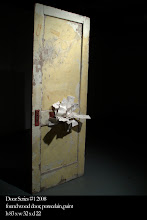Arts and Crafts Movement
In the mid-to-late nineteenth century, with the advent of industry, people migrated from farm to city for employment in factories. After centuries of working the land, humankind was suddenly yanked away from it, and lost touch with its cycles, its beauty, and its power. Englishmen William Morris (1834 – 1896) and John Ruskin (1819 – 1900) believed this to be a serious problem, one that art could help to remedy. Their ideas launched the Arts and Crafts Movement and took physical form in interior that referenced nature and shunned the ugliness of the industrial environment. Morris and Ruskin championed a return to hand-craftsmanship and to times past, which they saw as steps towards a new social agenda, one based on the hope that beautiful domestic interiors would foster responsible citizenry.
The Arts and Crafts Movement took hold in the U.S. just after the turn of the twentieth century. Architect Frank Lloyd Wright (1867 – 1959), who designed architecture and furnishings as a singular expression, is often associated with the Movement. Art potteries sprang up all around the country, and included Rookwood in Ohio, Newcomb in Louisiana, and Van Briggle in Colorado, to name just a few. At man of these art kilns decorators, who were often woman, hand-painted mass-produced blanks that had bee cast in molds. Thus, multiples were the literal underpinning of Arts and Crafts ceramics in the U.S., even if they were antithetical to the English Movement’s original theoretical agenda. In another ironic twist, the decorators often sat in rows, like factory workers
Post-World War II Studio Crafts Movement in the U.S.
Most of the American Arts and Crafts potteries went into decline between the World Wars, and the post-war Studio Craft Movement filled a void that potteries left behind. This coincided with the rise of ceramics departments in universities in the U.S. and with the consideration of clay as a legitimate material for the creation of fine art. This art-for-art’s sake demand suitable exhibition veues. Whereas the products of the Arts and Crafts potters and decorators were sold in local five-and-dime stores and in department stores, post-war ceramic artists regarded fine art galleries and museums as their venues for interface with the public and the art market. When the Museums of Modern Art presented Peter Voulkous’s (1924 – 2002) solo show in 1960, one of the most respected institutional gatekeepers in the world permitted entrée to contemporary ceramics.
Monday, August 18, 2008
Subscribe to:
Post Comments (Atom)

No comments:
Post a Comment